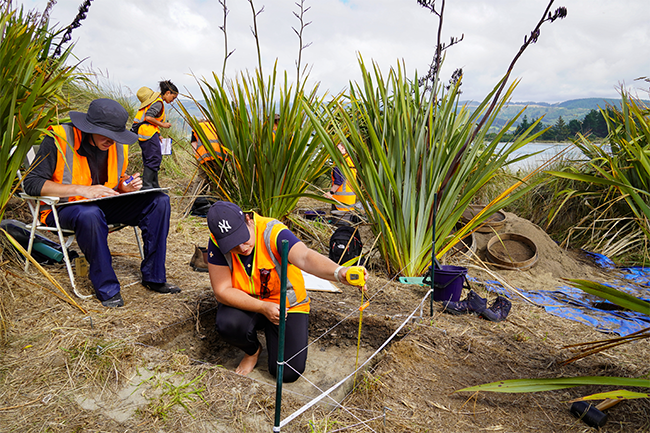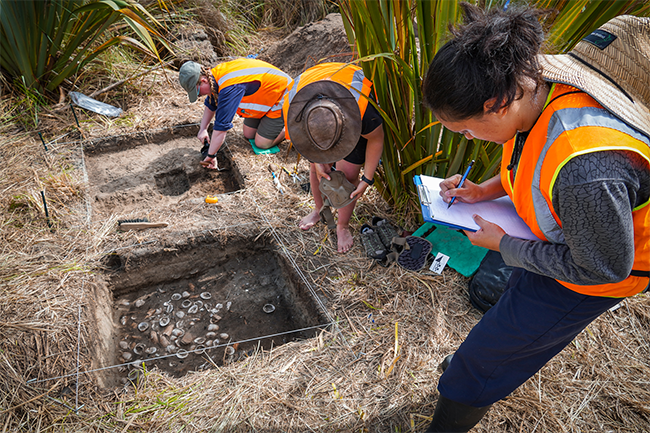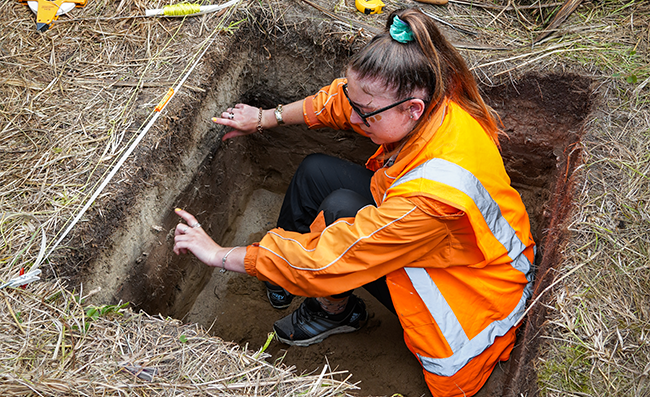Monday 14 March 2022 2:41pm

Masters and honours students worked together at the site. Photo by Eugene Yeo.
An excavation site at Doctors Point is helping to shed light on a little-known part of Aotearoa New Zealand’s history.
University of Otago Archaeology Professor Richard Walter and his colleague Associate Professor Anne Ford said nine postgraduate students spent three weeks over the summer excavating the site which dates back to the mid-1400s.
They believed about 40 to 50 people lived in the village, on and off, for about 15 years.
“It’s a period of time we don’t know a lot about, so these types of sites are very important,” Professor Walter says.
“We have a fairly good understanding of the period 1300 to early to mid-1400s because the sites are large, and they contain a lot of moa. They’re highly visible and there’s been a lot of excavation on those sites.”

The students were at the site for three weeks. Photo by Eugene Yeo.
However, not a lot had been written about what happened along Otago’s coastlines when the moa went extinct and there was no longer an easy to acquire source of meat, he said.
Around the same time there seemed to be a drop in population levels, and village sites became smaller.
“So that’s why these sites are important, because they tell us about post-moa hunting adaption, how people were adapting to the new economic situation and new ecologies.
“We are learning a lot about the way of life, diet, and the trade and exchange systems that were occurring along this coastline in that period.”
People started to rely heavily on inshore fishing and shellfish, he said.

Photo by Eugene yeo.
It was likely there were more sites similar to the Doctors Point site further along the coast.
“In the early 2000s the Department of Anthropology excavated an early 1500s village at Purakanui Inlet which is about 10km south of here. There are probably similar settlements around Moeraki, and further south into the Catlins.
“The Doctors Point site had been known since the early 1900s, but a significant increase in erosion in recent years made excavation more of a priority, and as such, we have been visiting it regularly for the last 25 years”, Professor Walter says.
“This year’s excavation had gone very smoothly and we are grateful for the support we have received from local runanga, Kati Huirapa Runaka ki Puketeraki.”
